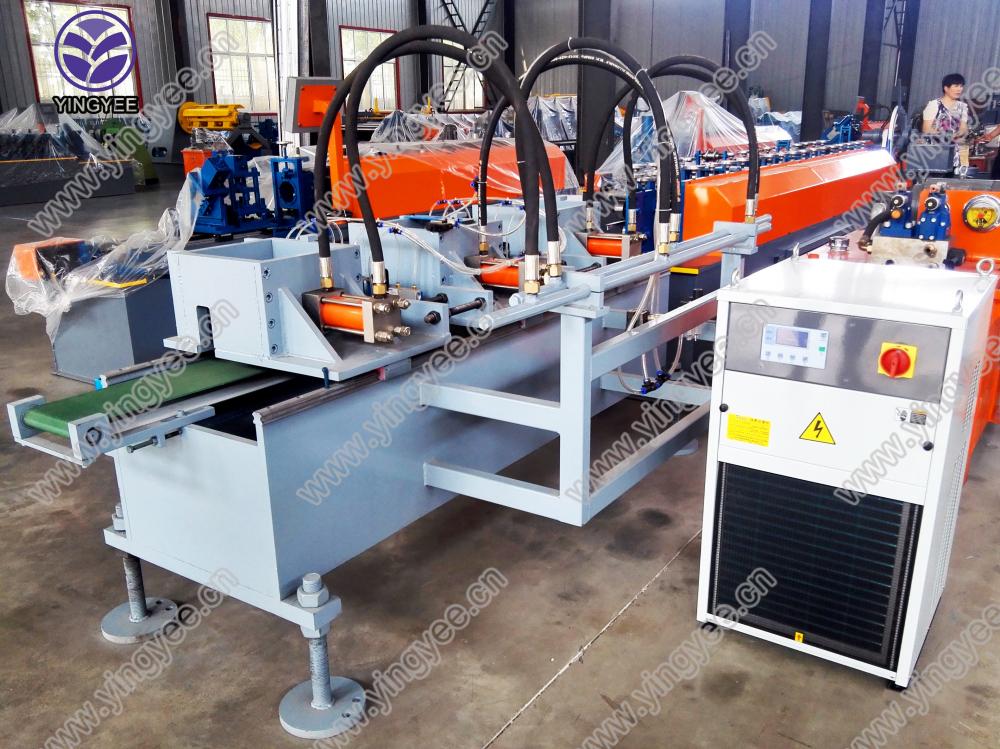
Automated T-Ceiling Production Line Revolutionizing Manufacturing Efficiency
In today's competitive manufacturing landscape, the quest for efficiency and precision has led to significant advancements in production technologies. One area that has benefited immensely from these advancements is the production of T-ceilings, commonly used in commercial and industrial spaces. The introduction of automated T-ceiling production lines has transformed the way manufacturers approach this critical aspect of construction, enhancing production speed, reducing labor costs, and improving overall product quality.
The automated T-ceiling production line represents a shift from traditional manufacturing methods, which often rely heavily on manual labor and time-consuming processes. In contrast, automated lines utilize advanced machinery and robotics to streamline operations. This modernization begins with the initial stages, where raw materials, such as metal or gypsum board, are fed into the system. Automated cutting machines precisely size the materials according to specifications, ensuring minimal waste and consistent quality.
Automated T-Ceiling Production Line Revolutionizing Manufacturing Efficiency
Moreover, automation enhances accuracy in the production process. Manual errors can occur during cutting, assembly, and finishing, leading to product variances that can compromise quality. Automated systems, equipped with precision technology and continuous monitoring, ensure that each step is executed flawlessly. As a result, manufacturers can produce a consistent product, meeting the stringent standards required in the industry. This consistency not only boosts customer satisfaction but also strengthens a company's reputation in the marketplace.

In addition to efficiency and accuracy, automated production lines promote worker safety. Traditional T-ceiling manufacturing often involves hazardous tasks such as heavy lifting, cutting, and assembly. By utilizing automation, companies can reduce the physical strain on their employees and minimize their exposure to potential workplace hazards. Workers can transition to more skilled roles, overseeing automated systems, quality control, and overall production management, which not only enhances job satisfaction but also fosters a safer working environment.
Cost savings is another compelling reason for manufacturers to embrace automated T-ceiling production lines. While the initial investment in advanced machinery can be substantial, the long-term savings from reduced labor costs, minimized waste, and enhanced production capabilities often outweigh these expenses. Additionally, with higher throughput and consistent quality, companies can boost their profit margins and gain a competitive edge.
Furthermore, the automation of T-ceiling production is aligned with the growing demand for sustainability in manufacturing. Automated systems can optimize material usage, significantly reducing waste and energy consumption during production. Many modern machines are designed with energy efficiency in mind, helping companies decrease their carbon footprint while meeting environmental regulations.
In conclusion, the automated T-ceiling production line stands as a testament to the advancements in manufacturing technology. By increasing efficiency, ensuring consistent quality, enhancing worker safety, and promoting sustainability, these systems are revolutionizing the production process. As the construction industry continues to evolve, manufacturers that invest in automation will not only thrive but also set new standards for innovation and excellence in T-ceiling production. This shift not only meets the growing market demand but also positions companies at the forefront of the construction industry's future.